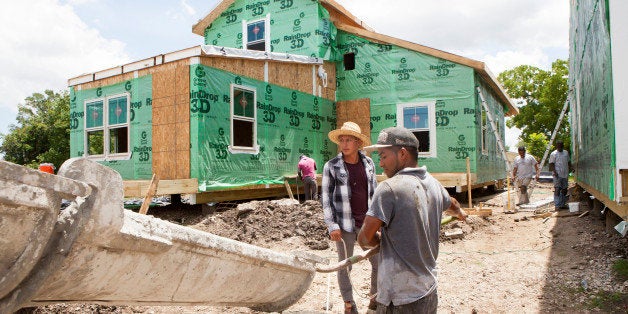
Preparing for hurricanes is an annual event for millions of Americans, but for the cost of a typical bathroom remodel homeowners can build a resilient structure that protects their family and themselves. According to the National Oceanic and Atmospheric Administration (NOAA), hurricane hazards come in many forms, including storm surge, heavy rainfall, inland flooding, high winds, tornadoes and rip currents.
We can't simply ignore the strong winds and associated hazards, and hope that they'll miss us. As one of the deadliest hurricanes to strike the United States, Katrina took 1,836 lives with destructive winds blowing at 175 mph. Many critical service structures failed in the immediate aftermath in order to provide shelter and safety.
Unless we change the way we build homes and businesses, our communities are going to continue to see excessive hazard and destruction based on Mother Nature's whims. More resilient structures will help keep our communities intact.
As the nation's key preparedness leaders assemble this week for the National Hurricane Conference in Orlando, Florida, the resilience of concrete is again the key focus for the Portland Cement Association (PCA). Teaming up with the Federal Alliance for Safe Homes (FLASH) and the Federal Emergency Management Agency (FEMA), PCA will educate the forum on the value of building with concrete to weather the storm.
"Concrete homes and safe rooms are a proven way to keep people safe during a high wind storm," said Donn Thompson, senior director of market development at PCA. "These resilient buildings not only provide safety, but peace of mind when the next natural disaster strikes."
Reinforced concrete and concrete masonry walls can withstand high winds and protect occupants. At a minimum, safe rooms can be built as part of the structure to serve as shelter within the building during hurricanes and tornadoes. Walls constructed using masonry units, steel reinforcement, and grout are strong. When high winds occur, reinforced masonry buildings resist the pressures and flying debris that can knock down or damage less robust construction.
In order to help quantify property and construction losses associated with disaster, researchers at the MIT Concrete Sustainability Hub have developed a method to incorporate the risk and repair costs of damage from hurricanes and earthquakes into life-cycle analysis of residential buildings.
The findings will help evaluate the cost effectiveness of alternative building systems that exceed minimum building codes and resist damage from natural disasters.
Architects, engineers, and builders use life-cycle cost analysis to assess the real cost of a building or home over its useful life. Now such analyses can look at resilience in addition to typical factors such as initial construction, energy for heating and cooling, maintenance. The goal is a tool to compare the lifetime cost of different materials or construction systems.
For example, a home built with more wind and debris resistant concrete might be more expensive initially, but those costs will be more than offset by reduced disaster repair and mitigation costs for the homeowner and surrounding community over the life of the building.
By using stronger, more durable materials we can better protect ourselves and our communities when the next hurricane strikes. Strengthening our building codes and using resilient design techniques can allow essential services to continue through any recovery.
A "one size fits all" approach doesn't work for building codes. They must be adapted to fit the dangers communities are likely to face for buildings to stand up to the next storm. Communities with more robust building codes offer better protection of life and property.
What do you want for your community?